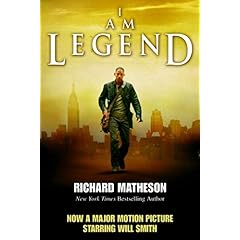|
|
|||
|
|
|

|
|
|
|
|||
|
|
|
|
|
Starring: Will Smith Director: Francis Lawrence | ||||
 | The phrase "high concept" is used often by Hollywood writers and producers. In plain English, it means "doubly plagiarized." Ever since the disintegration of the studio system (because of antirust laws), the only way to get a feature film made by the so-called majors (Warner Bros; Paramount; MGM; 20th Century Fox; etc.) is to (i) "package" the film with a well known star who asserts his or her interest in appearing in the film; and (ii) minutely categorize the genre of the film, so that the investors have (or think they have) a very clear idea of precisely what sort of product they are being asked to finance. "High concept" refers to the practice of pitching the idea of a film by referring to different elements in two previous films -- those elements giving some idea as to the creative content in the new film. It goes something like this: "This movie is titled 'Bullets of Love'. It combines the violent action-adventure of 'Rambo - First Blood' with the timeless romance of 'Casablanca.'" Yeah, it's weird, but if the writer were to say "This is completely original -- unlike anything you've seen before" -- the movie would never be financed. Movie backers today, most of whom have a "safety first" philosophy of business, don't want something they've never seen before. That scares them. They want "Something we've seen before, but that is nevertheless totally new and different." Thus, "high concept." "I Am Legend" (2007), whose title comes from a science fiction novel of the 1950s, is a high concept movie based on two earlier films: one is "The Omega Man, 1971, starring Charlton Heston; the other is "28 Days Later", 2002, directed by Danny Boyle (who also directed "Trainspotting" and "Shallow Grave"). Both of these are better films than "I Am Legend". SPOILERS In "The Omega Man," biological warfare between Red China and the Soviet Union wipes out most of humanity. Dr. Neville (a Latin/French name whose roots mean "No City") is an MD researcher who is immune to the bio-toxins. The few survivors in Los Angeles (the location of the story) have become mutants: they cannot tolerate light (symbol: "unenlightened") and they form a subculture whose goal it is to destroy all remaining science and technology. And who is the lone guardian of the remaining science and technology? Right. Heston. So there's more at stake, dramatically, than his mere physical survival. Despite the 1971 cheesy special effects, the conflict is compelling. In Danny Boyle's stylish zombie/monster flick, some animal-rights activists attack a medical animal testing facility and free some animals that have been infected with a virus aptly named "Rage." The virus can cross over from animals to humans; it acts within a few seconds; and it turns the human victim into an irrational, rabid, blood-thirsty monster. "I Am Legend" (2007) took the latter plot device and superimposed it over the basic narrative in "Omega Man", but subtracted the philosophical conflict about science and technology. Too timid to accuse al-Qaeda of trying to launch bio-warfare, the film's inciting incident is a British-made anti-cancer vaccine that worked 100% of the time in the lab...but (what do you know!) mutated into a terrible plague that causes its victims to become irrational, rabid, blood-thirsty monsters. The story, therefore, is simply "Will Smith trying to stay alive in a world full of irrational, rabid, blood-thirsty monsters." That feeling welling up in most of you is probably a yawn. The best thing about "I Am Legend" was some clever film compositing (i.e., sandwiching of different images to create a unique hybrid image) in which we see wild animals -- deer, cougars, etc. -- roaming freely in New York City (the new location of the film's story). Save your money. | |||
| ||||